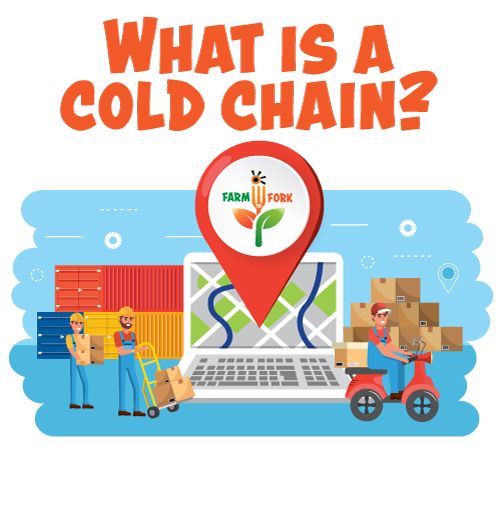
The majority of customers only consider cold chain management when they are driving home from the store and their ice cream melts. As it happens, cold chain management is an intricate and vital link in the world's food supply chain. It is in charge of making sure perishable goods—such as food, vaccines, and medications—are kept at the right temperature throughout the process from manufacturing to consumption. The risks are great: improper cold chain management can result in food spoiling, problems with safety and quality, and monetary losses. The best cold chain management techniques have been outlined in this article to assist you in ensuring a seamless and high-quality food supply.
Although it is common knowledge that maintaining regulated temperatures is necessary for the transportation and storage of food and medications, cold chain management involves much more. Understanding cold chain management best practices is essential to ensuring that perishables are properly stored and supplied. Temperature monitoring is done at every step of the process, from packaging the product in its initial state to making sure it gets to its destination safely. It also entails having sufficient safety protocols in place, well-trained staff, and effective temperature-controlled storage equipment. Cold chain management becomes more complex as a result, which can lead to mistakes and delays in addition to being a significant resource drain for enterprises.
THE FOUR MOST INNOVATIVE COLD CHAIN MANAGEMENT INNOVATIONS.
1 . AUTOMATED SURVEILLANCE AND MANAGEMENT:
We think beyond simple things like staff training and temperature control when discussing efficient methods in cold chain management. Although variations on this theme have long existed, systems with more advanced automation features are currently in vogue. temperature, relative humidity, and other parameters related to the environment are tracked automatically by control and monitoring systems, which notify operators when there are any deviations. In addition to lowering the chance of spoiling, this also lowers the expense of labor and monitoring, making the cold chain management system leaner and more effective. Regarding cold chain management, this is among the greatest approaches.
2 . MORE EFFECTIVE LOGISTICS TO CUT CARBON FOOTPRINT :
The carbon footprint of cold chain management could, without a doubt, be far lower. Reducing emissions from storage and transportation is a crucial component of the equation as more businesses integrate sustainability into their corporate cultures. Reducing carbon footprint through improved logistics is one of the finest cold chain management strategies. There are now solutions that leverage artificial intelligence (AI) to increase efficiency in addition to the apparent changes that any organization can do right now, such using lighter materials or combining shipments. An example of one of these systems, which uses AI to track temperature and ambient factors, was provided above.
3 . END OF WASTE :
The world's crisis of food scarcity requires quick attention. Thankfully, cold chain management businesses are coming up with inventive ways to minimize food loss while giving their clients greater service. Zero-waste systems are currently in vogue, allowing for real-time data monitoring and efficiency optimization at every stage of the process, from harvest to shop shelves. It doesn't end there, though. Through traceability from farm to table, innovations like as blockchain technology may be leveraged to promote transparency, lower product losses, and maintain food safety throughout the cold chain process. In terms of cold chain management, this is among the finest practices.
4 . OBJECTIVE PERCEPTIONS :
It's not enough to be able to purchase peaches in December anymore, for example, as more and more people become accustomed to the benefits of cold chain management. We want our peaches to be sweet, fresh, and just as delicious as they are in the summer. In cold chain management, subjective perceptions like flavor and texture are now equally crucial as temperature control. Food quality is especially important for perishables, which quickly lose quality when exposed to improper conditions. This includes crispness, juiciness, and flavor. In order to address this issue, businesses are measuring subjective attributes like firmness, sweetness, and even color using advanced sensors and AI-based algorithms.
With the use of renewable energy sources, environmental monitoring, and subjective experiences, among other technologies, ensuring that items remain safe, fresh, and of the greatest caliber for extended periods of time has never been simpler thanks to these innovations. Cold chain management appears to have a very promising future!
Upvoted. Thank You for sending some of your rewards to @null. Get more BLURT:
@ mariuszkarowski/how-to-get-automatic-upvote-from-my-accounts@ blurtbooster/blurt-booster-introduction-rules-and-guidelines-1699999662965@ nalexadre/blurt-nexus-creating-an-affiliate-account-1700008765859@ kryptodenno - win BLURT POWER delegationNote: This bot will not vote on AI-generated content